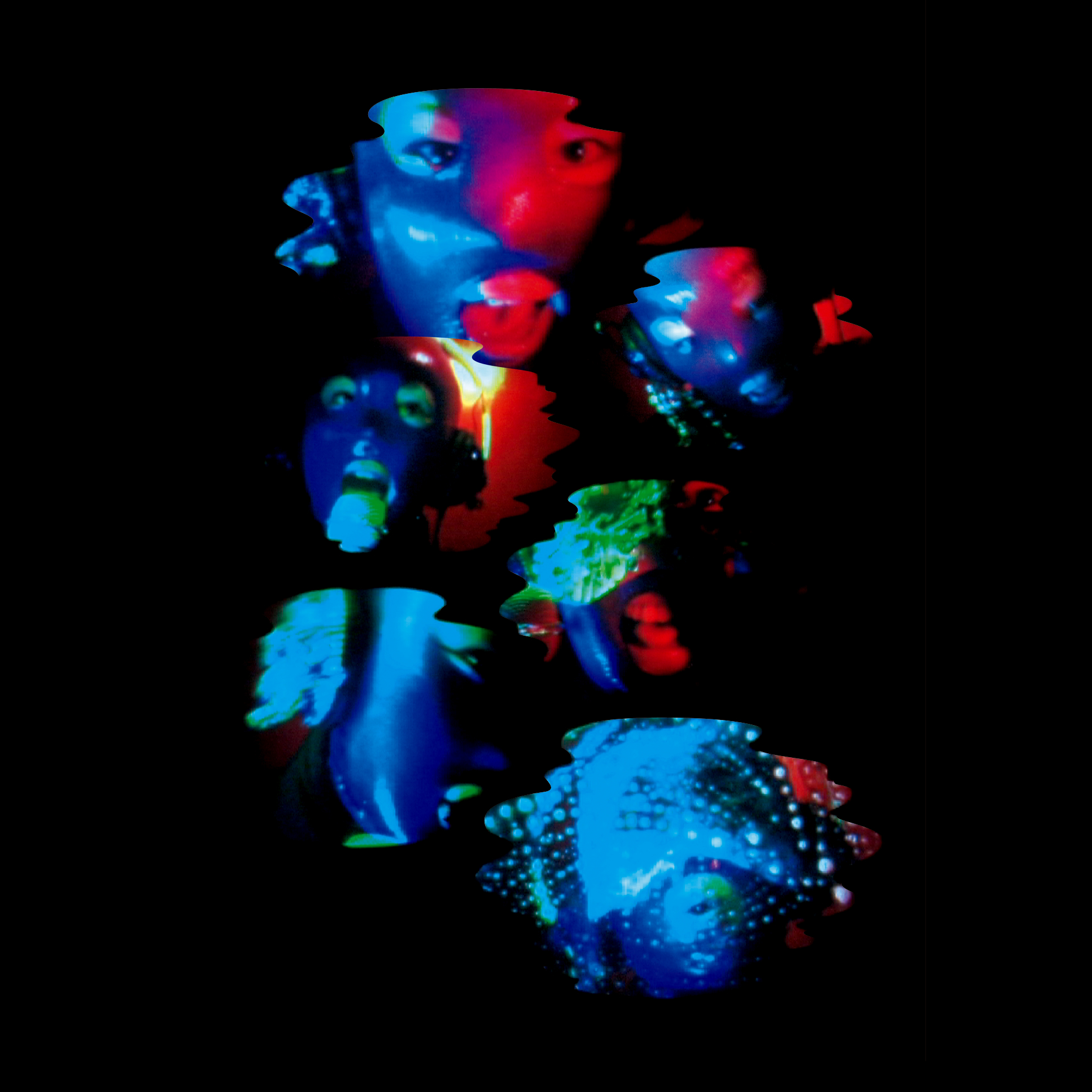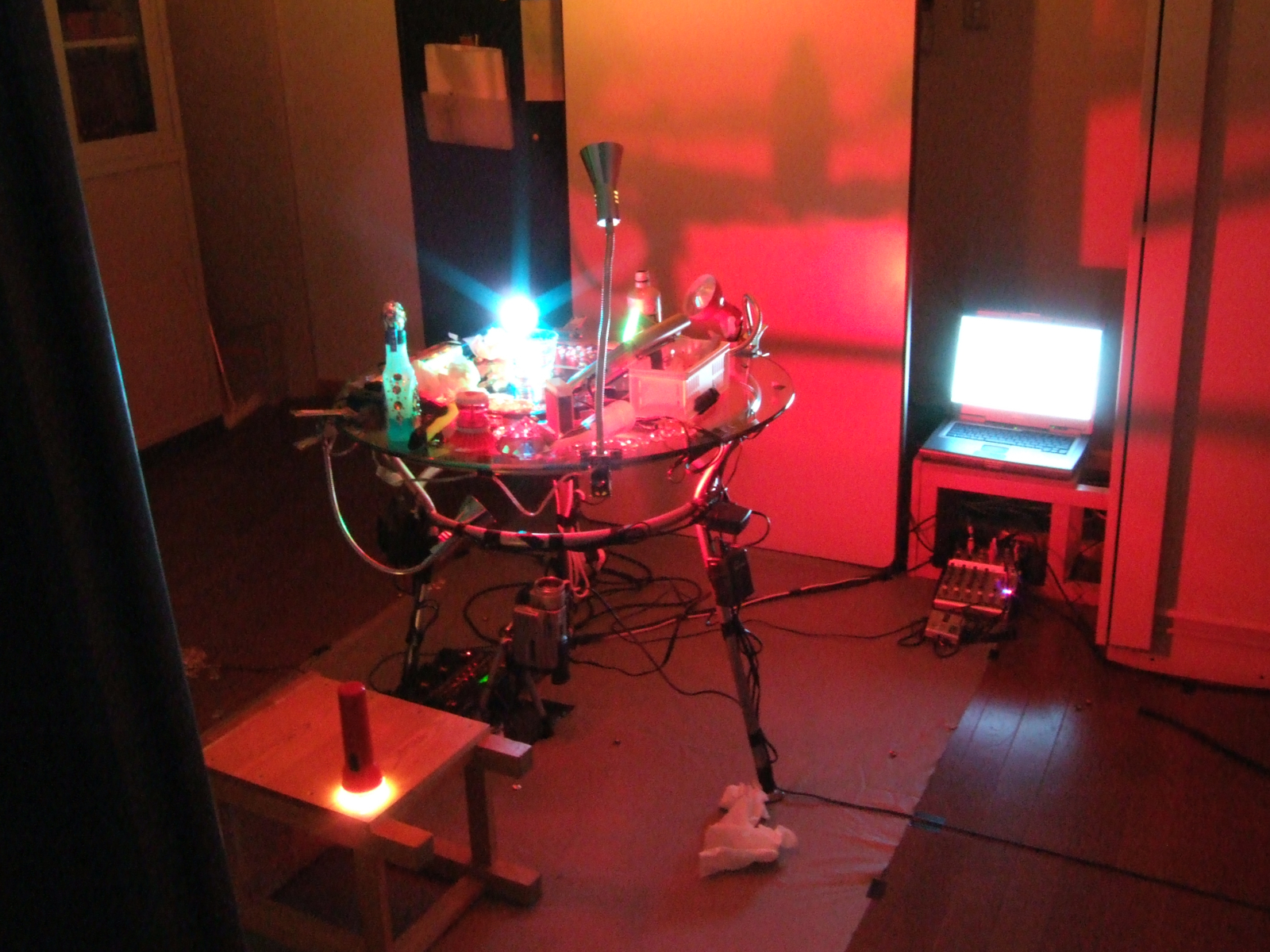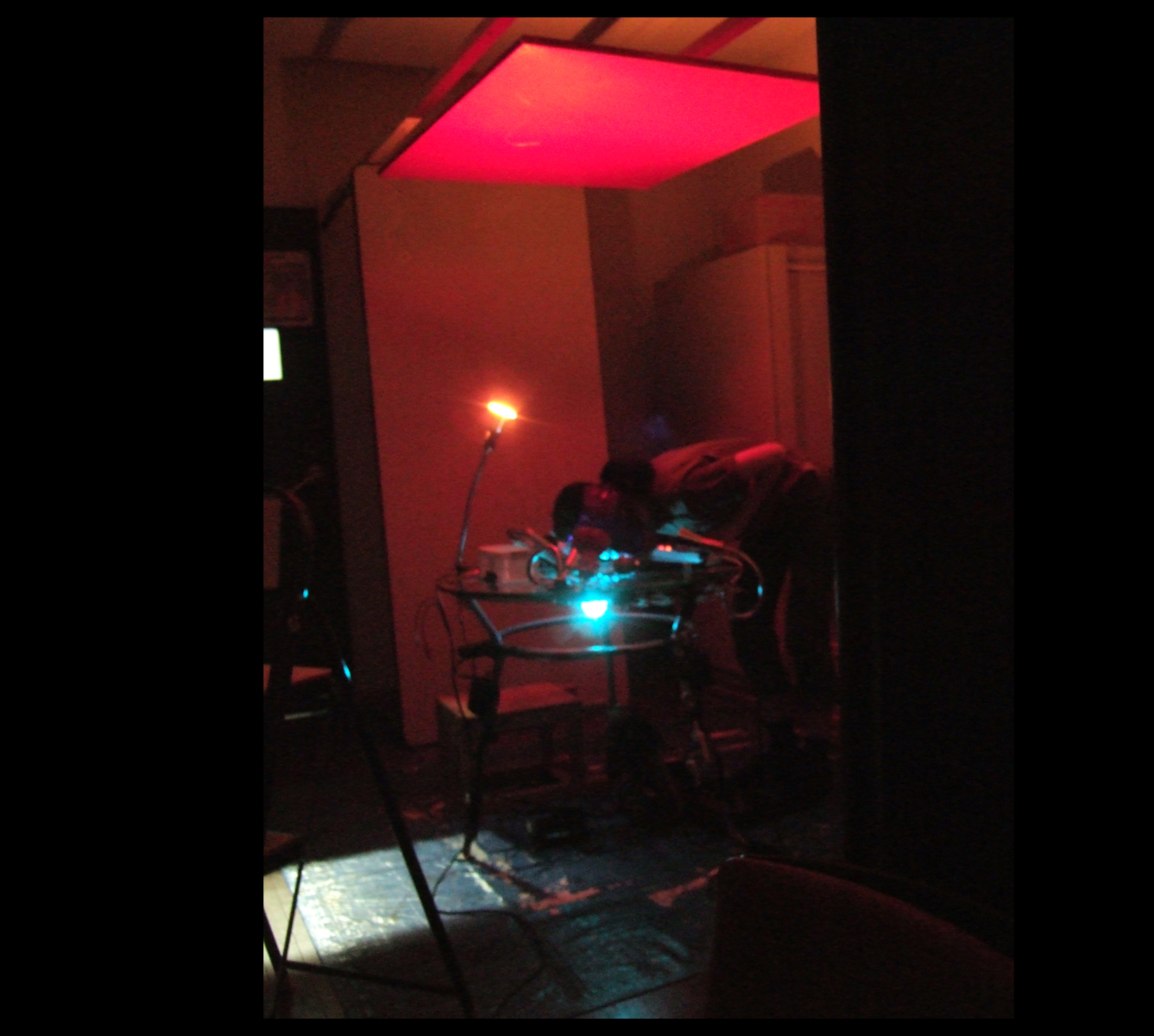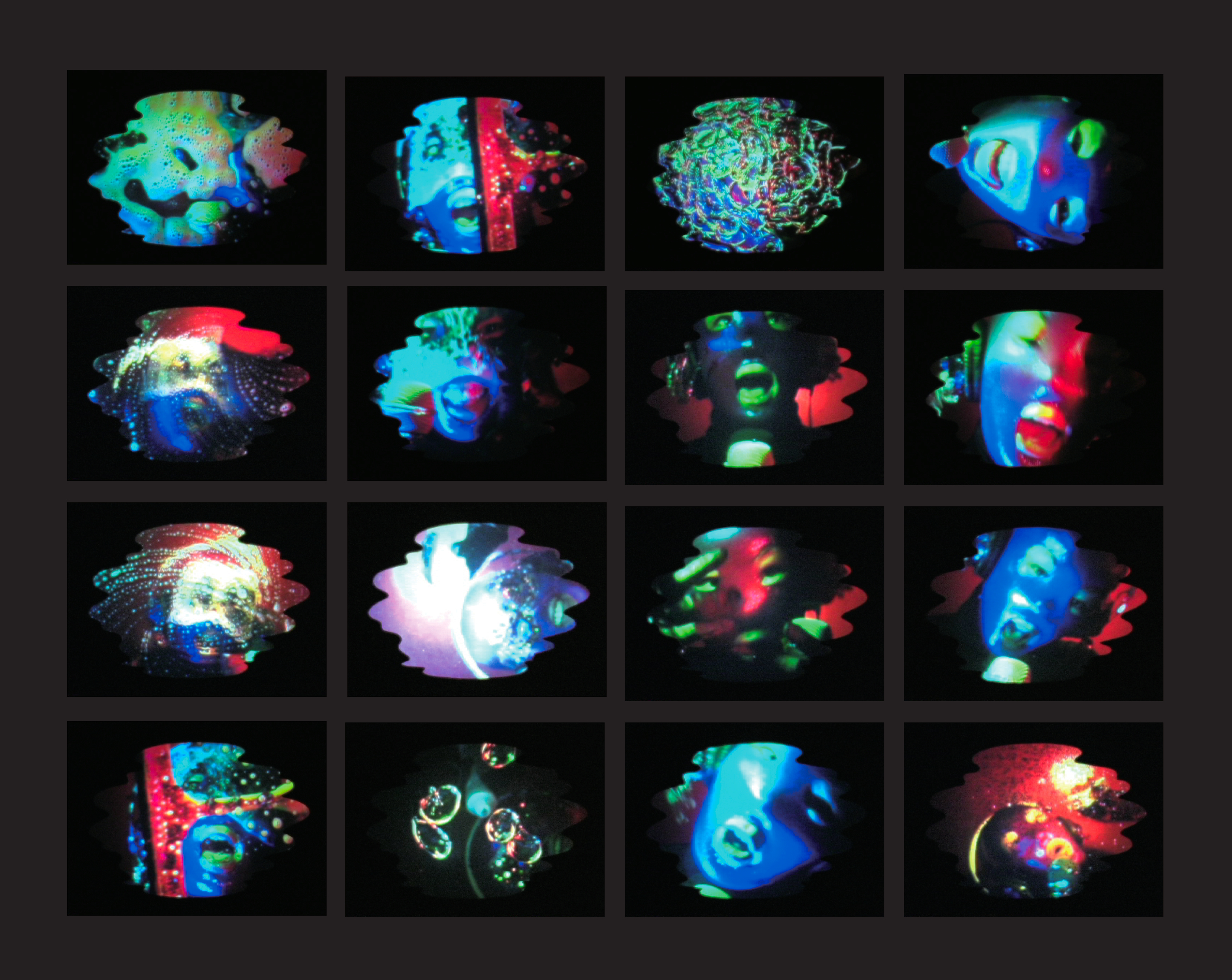PAKARA... is a complicated work. The artist's live performance in an isolated room is videotaped and the video is projected in real-time in another room where the viewers watch it.
Although having been told that it is a "one-time-only live performance", the viewer's perception is suspended - they cannot be sure if it is really a real-time performance or a video filmed beforehand.
The artist does not see any figure of the audience, either, until the end of the performance, either. Who they are? What do they look like? The information on the audience is totally cut off from the artist.
The message from Niitsu, the artist, is sent to the audience through various devices and instruments (mask, microphone, voice changer, camera, screen). In addition, the image on the screen is dissimilated distorted by replacing the vertical with horizontal.
Plus, even the lyrics of the song, which should be essential if it is a message, are written in an imaginary fictive language.
. . .
The naive question "is the red I see is really the same red as that others see?" leads you to philosophy. This question now contains more complex issues due to the development of media technology.
A rough compression though, what post-modern philosophers had thought is that, even if you say "I think therefore I am", the message is, before being a logic (what is supposed to be always true), a mere batch of "words" that have a certain country's history, and is some "object" because it cannot help being printed on some material (whether ink on paper or electronic light), and saved by and circulated between people.
The medium that carries a message is also a message, and the context that underpins the meaning of a text is also a text.
"I" is actually not singular, but it can appear simultaneously at multiple places with various media beyond time and space.
Furthermore, they recognized that "I" had been originally plural, which of course means that an accident where "I" and another "I" meet can happen.
. . .
However, as an artist, Niitsu is not satisfied with such a value-neutral situation assessment.
(I am sure that) She thinks the red she sees is nothing but "this particular red" and she has a desire to convey it this to other people.
Also, (I am sure that) she has a suspicion and despair that the red other people see is different from "this particular red" .
The more complex the media get, the wider more people's emotions oscillates. But she always tries to take this fact affirmatively, reversing changing the disconnection, disappointment, discrepancy and betrayal, which the media have brought about, into opportunities for encounter, joy, understanding and fusion.
This is her aim. More precisely speaking, this is her hope and suggestion
- she seems to say that if "discommunication" is one of the "human conditions" , laughing it away, rather than bothering over it, is more i, n, t, e, r, e, s, t, i, n, g.
Hiroyuki Takahashi (Art Critic / Independent Curator)

Barbaric Song
Adoka Niitsu
In the present age, we grasp a sense of the actuality of occurrences more through the media than actual experiences. When we saw on TV the image of NY's World Trade Center collapsing, it took us some time until we were able to recognize it was really happening at that moment. In fact, paradoxically, that we have lost the sense of reality is our reality. In this situation, how can we build up relationships between ourselves and others?
With this question, I did a one-time-only live performance during the exhibition period, incorporating our actual situation, where we are surrounded by various media, into the structure of the work. I wanted to put myself inside the medium, testing"connection as separation: with delusive imagination as glue". Is it possible to have delusive connection with the audience, which is not about collision of the real and the virtual but beyond them?
. . .
The performance ought to be done just on my own. It was only me who controlled all the staging devices including a light fader under the table and a sound effector to create a vocal effect that was put beneath my feet. I controlled them freely, but the performing room, which is a medium surrounding me, strictly limited my physical expression.
Not recognizing the number of viewers and the looks of their faces, I started the performance with a signal by an in*tension member.
I had no idea about the intensity of the atmosphere and how the audience reacted during the performance, and could not even hear the applause when I finished.
I was only delusively imagining the existence of the audience. The documentary video of this event shows no audience, although there were people outside the frame.
Thus, it seems more like a video work than a documentary (the only proof that it is a documentary is sound generated by the audience such as occasional coughs and other little bits of noise).
The audience that was surely there was merely a product of my imagination for me. And the viewer who saw the documentary video has also been imported in my delusive imagination, and will stay there forever.
. . .
The song that I sung in the performance is one from the series of my work entitled Barbaric Song, whose lyrics are written in a language of a nonexistent country.
The word "Barbaric", meaning "savage" or "uncivilized", derives from the ancient Greek word "Barbaroi" (Barbarian), which Greek people used for other ethnic groups voices as they sounded to them like animal growls.
I feel like now is the time when we are exactly like Barbarians to each other.
Despite having all kinds of tools to enable us to communicate to anyone at anytime, we are filled with a sense of alienation with our feelings unconveyed to each other.
Both separation and connection are made up by mind through delusive imaginations.
We just magnify the local and temporal sensation of separation / connection with our delusive imaginations and get frightened / enraptured. So-called perfect and everlasting separation / connection is also built up by delusive imagination. Staggering unsteadily, we believe and doubt, and get pleased, moved, upset, feeling hate and despair. In other words, however, the delusive imagination is proof of the fact that you had some excessive expectations or desires regarding the possibility of connection with others.
Finding out a positive energy in a negative situation, through my artistic practice, I would like, almost barbarically, to enhance the limitless desire to connect with others, the"power of delusive imagination".
My ecstasy only comes from sensing this enhancement happening.
Adoka NIITSU
Text for document book of in*tension
Translated by Yuki Okumura / Co-translated by Tom Bidwell




